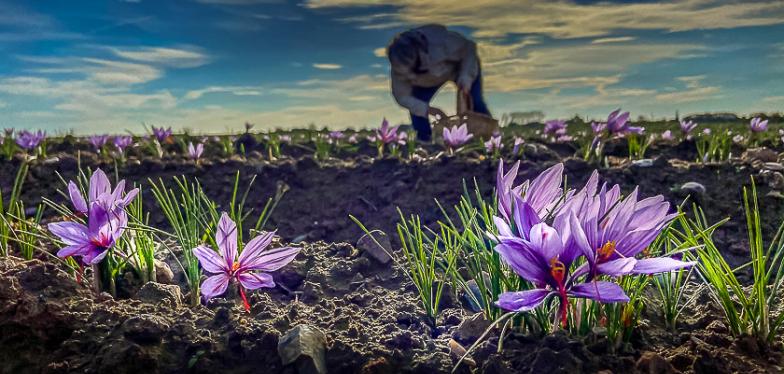Saffron, the red gold of Hesbaye

Saffron, certainly one of the oldest spices, is still undeniably the most coveted spice on the planet.
In Greece, its cultivation and use go back nearly 4,000 years. Its use then spread in the Middle East, as attested by the writing of Assyrian botanists from the 8th century BC. Sought after since antiquity for its cosmetic, aphrodisiac and dyeing properties, saffron remains very popular, although its virtues are often unknown today.
Saffron is a good source of minerals and vitamins that help to control blood pressure, regulate the heart rate and strengthen the immune system. It is composed of carotenoids, which are known for their antidepressant and aphrodisiac properties. And one or two pistils a day is enough to guarantee all these beneficial effects.
The most expensive spice in the world, so much so that it has been nicknamed "red gold", has also been grown in Belgium, in Wasseiges to be precise, since 2009. In this small village in Hesbaye, in the province of Liège, Eric and Sabine Léonard are making a success of their project, called Le Safran de Cotchia. They have planted more than 100,000 crocus sativus bulbs that flower between September and November. The harvested flowers are then trimmed. This operation involves opening up the flower with a pair of scissors to remove the pistil with its three stigmas, and cutting off one centimetre.
It is possible for us to grow crocus sativus in our gardens. The bulbs should be sunk 20 cm deep into well-drained ordinary soil with sand, expanded clay balls or lava granules. The bulbs will naturalise quickly and regrow from one year to the next.
But it does take 150 to 200 flowers to get just 1 gram of saffron!